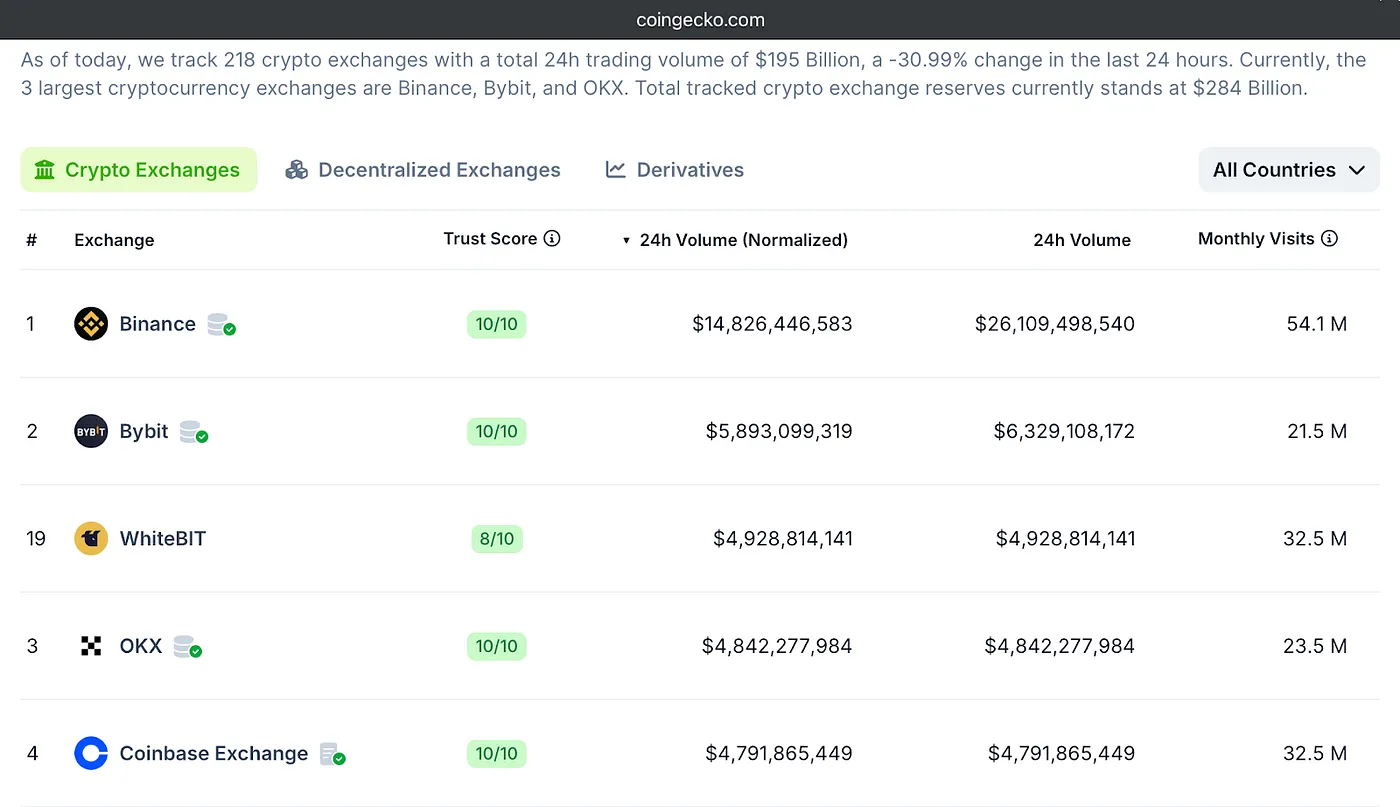
How Listings and Delistings Affect Cryptocurrency Prices
For a long time, there has been a strong belief in the crypto community that a cryptocurrency listing on an exchange is an event that inevitably positively impacts its price. If a cryptocurrency is not traded on any major exchange, its prospects for price growth are limited — but they will certainly appear once it’s listed. Conversely, delisting is often seen as a sign that the cryptocurrency can be forgotten forever.
However, 2024 seems to have seriously shaken this belief. Let’s delve into the details:
- How important is it for a cryptocurrency to be listed on major centralized exchanges today?
- Should you consider acquiring an asset that is not yet (or is no longer) listed on exchanges?
- If so, where can such purchases be made?
Cryptocurrency Price after Listing on an Exchange

In rankings like those on CoinGecko and other similar platforms, Binance has held the top spot for trading volume for several years. As a result, listing on Binance is considered a milestone event for any cryptocurrency. Such listings are often followed by a price pump, at least in the short term.
A classic example of a successful listing is BitTorrent:
- Trading began on February 3, 2019, with a token price of $0.00012.
- By May 29, 2019 — four months after the IEO — the price had risen to $0.001781, a nearly 15-fold increase from the initial price.
- Over time, the price gradually declined, hitting a low of $0.000205 on March 18, 2020. Even then, this was 1.5 times higher than the starting price.
- In the bull run of 2021, the price reached $0.01075, an 89-fold increase from its initial value.
- On December 6, 2021, the project launched its own network, and the original tokens ceased to exist. They were converted to BitTorrent New tokens at a rate of $0.0026, still 22 times the original price.
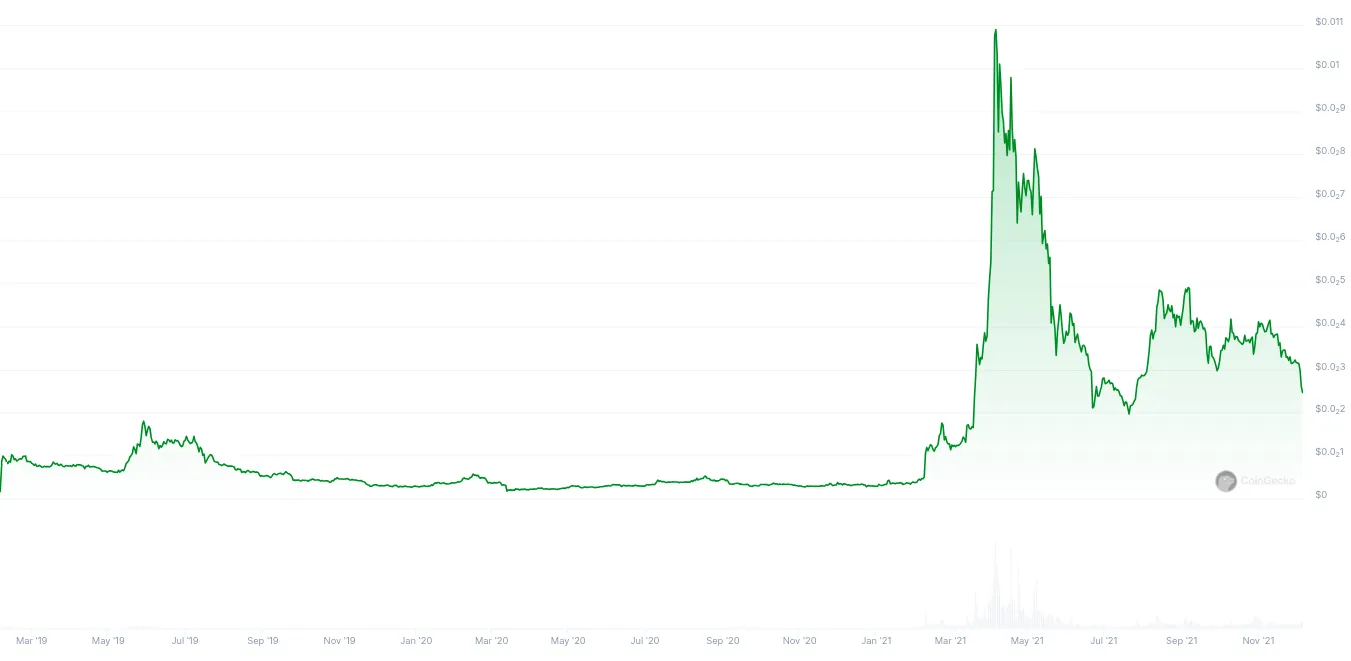
BTTOLD price chart. Source: Coingecko.
In BitTorrent’s case, the token price never returned to the level it was at the time of listing, always remaining above that threshold.
However, there have also been cases where the listing pump was extremely short-lived:
- The Lazio Fan Token was listed on Binance on October 18, 2021.
- The initial trading price was $1.
- Within seconds of trading, the price soared to $100.
- The first week ended with the price stabilizing at $12. Four weeks later, it dropped below $10, and as of December 8, 2024, it trades at $2.
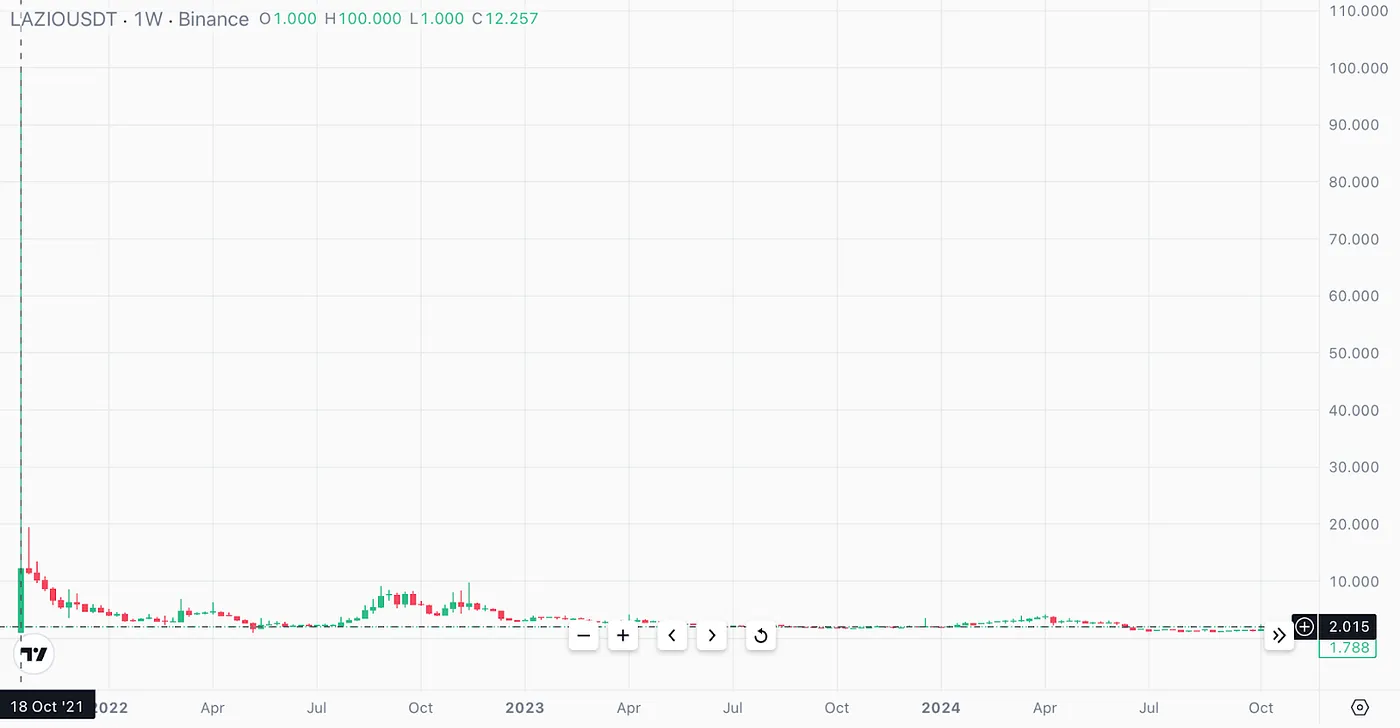
- The Space ID token was listed on March 22, 2023.
- The starting price was $0.025.
- Similar to Lazio, it skyrocketed 100 times to $2.5 in the first seconds of trading, only to decline.
- As of December 8, 2024, the price stands at $0.64–25 times higher than the initial listing price.
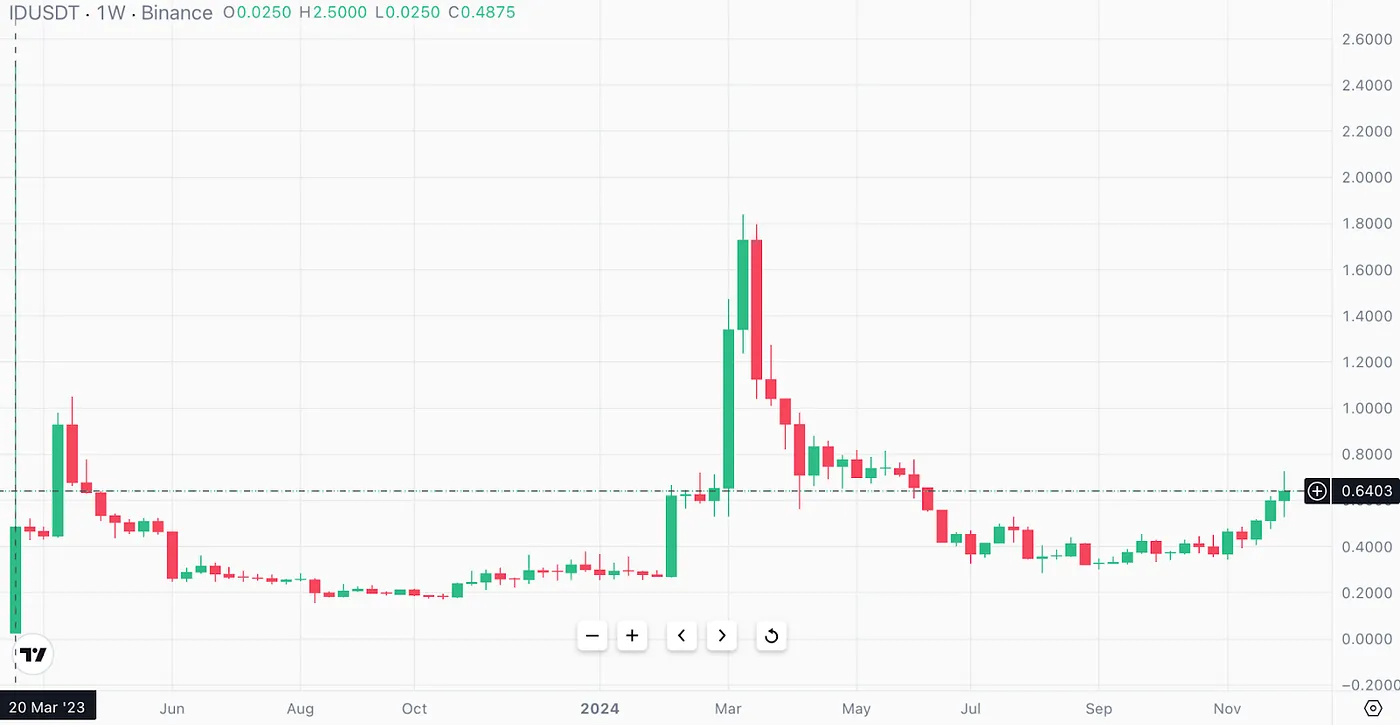
These examples reflect a typical price trajectory for tokens listed on Binance:
- An explosive, multi-fold increase during the initial seconds of trading;
- An immediate correction, erasing most of the gains;
- A gradual downward trend over time.
While prices may eventually revert to pre-listing levels, such declines often take months. Investors who acquire tokens during or before the listing usually have ample opportunity to sell at a profit.
In 2024, a surprising shift occurred, as seen in the case of the Hamster Kombat (HMSTR) game token.
- Trading for HMSTR began on September 26 simultaneously on multiple major platforms: Binance, OKX, Bybit, and BitGet.
- During pre-market trading, the average price was around $0.01. However, once main trading commenced, the price dropped to $0.006 within hours and later fell below $0.003. As of December 8, it stands at approximately $0.0045.
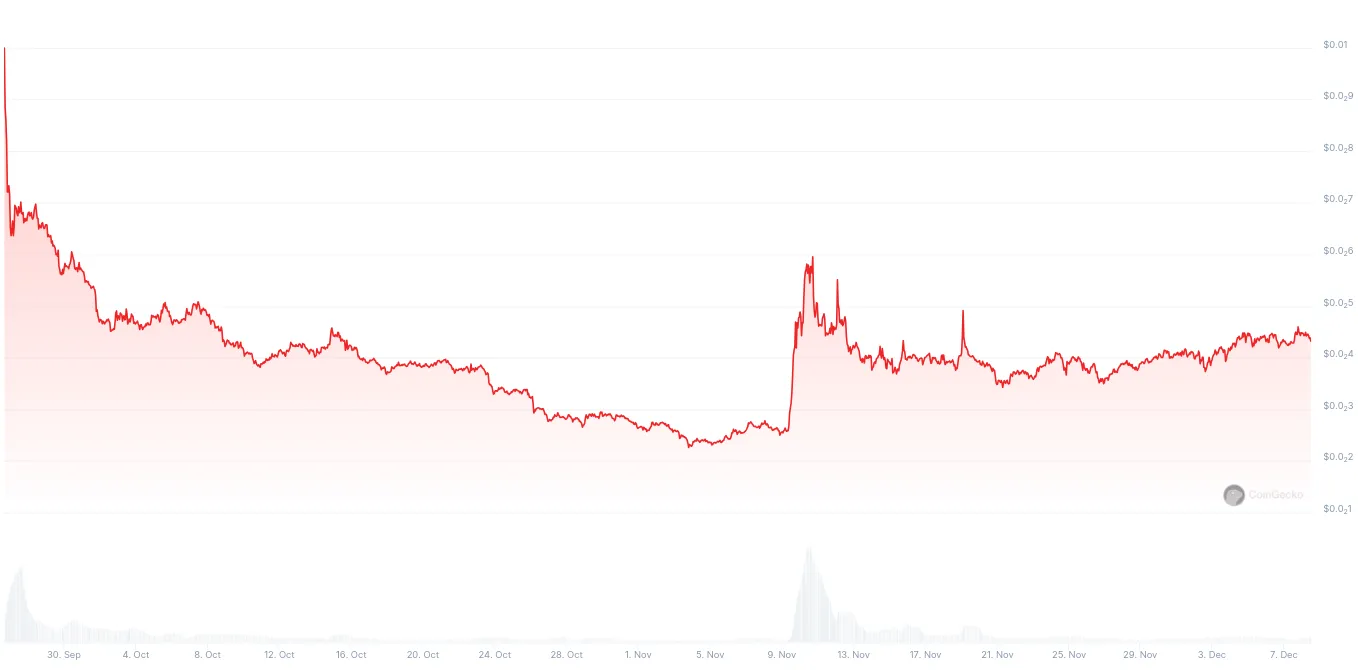
HMSTR price chart. Source: Coingecko.
Thus, the listing negatively impacted HMSTR’s price, which has not yet returned to pre-listing levels, with no signs of recovery in sight.
This was not entirely unexpected, as similar outcomes were observed with DOGS and Catizen tokens, which were listed on August 26 and September 20, respectively. After brief price increases, both tokens experienced consistent declines and have not returned to their pre-listing levels.
Thus, even a listing on the largest exchange, Binance, may no longer result in a price increase for a token but rather lead to its decline. In some cases, it might be more profitable to hold a cryptocurrency that has not yet been listed on a major platform and, conversely, to sell it when it is listed on a major exchange.
What Happens to Cryptocurrencies After Delisting?
When a cryptocurrency is delisted from a major exchange, many assume it signals the end of interest in the asset. Additionally, reduced liquidity due to the lack of trading on a significant platform often serves as a clear signal to exit the asset.
Logic suggests that upon delisting, the price should plummet to near-zero levels and remain there indefinitely. Even an announcement of an upcoming delisting can trigger a sharp price drop.
A notable example is the Gifto token, whose delisting from Binance was announced on November 26, 2024.
- The actual delisting is scheduled for December 10, but the price dropped sharply on the announcement date.
- A brief rebound followed, but the overall downward trend could not be reversed, especially after OKX announced its own delisting of Gifto on December 2.
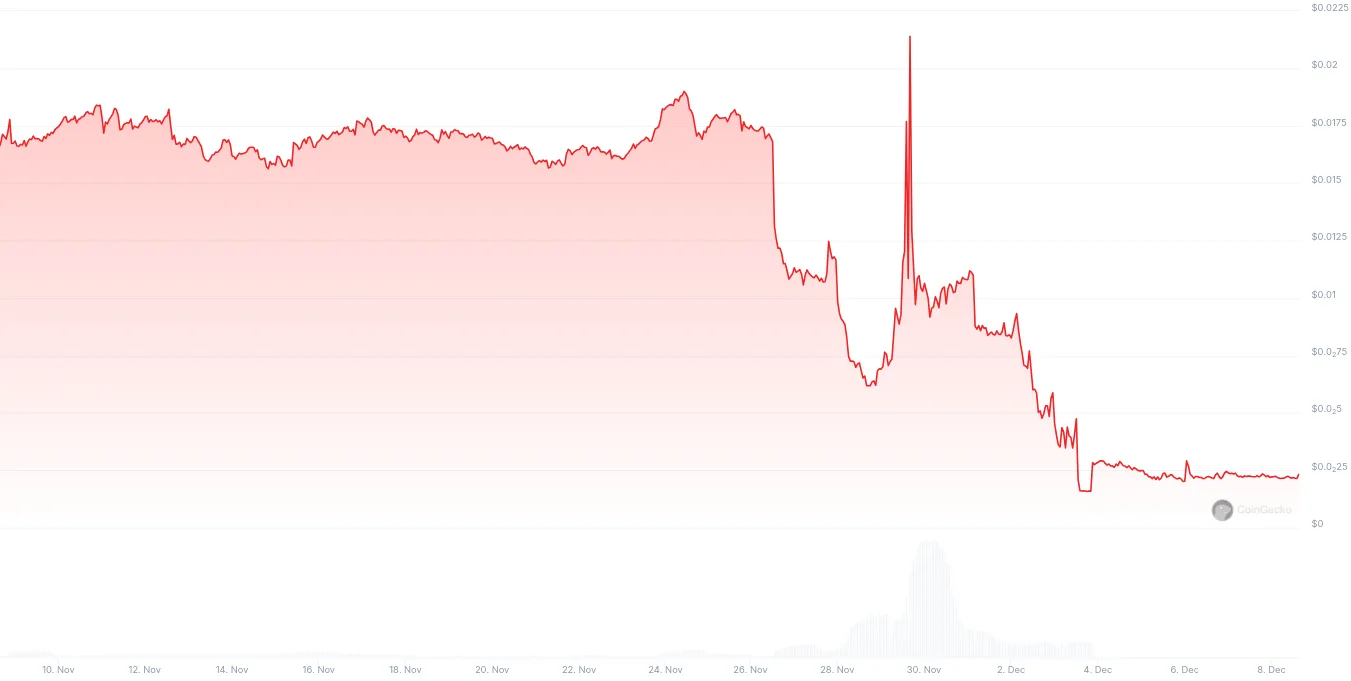
GFT price chart (November-December, 2024). Source: Coingecko.
However, there are instances where delisting does not reflect a cryptocurrency’s prospects:
- With the introduction of MiCA regulations, several major exchanges (Coinbase, Uphold, OKX) have been delisting USDT for their European clients. While this may reduce Tether’s European user base, it is unlikely to have a significant impact on the broader stability or future of USDT.
- Another example is Monero (XMR). Binance announced its delisting on February 6, 2024. Following the announcement, XMR’s price dropped from over $164 to $100 within 12 hours — a 40% decline. However, the price later rebounded and, as of December 8, 2024, trades at $200, significantly higher than its pre-delisting level.
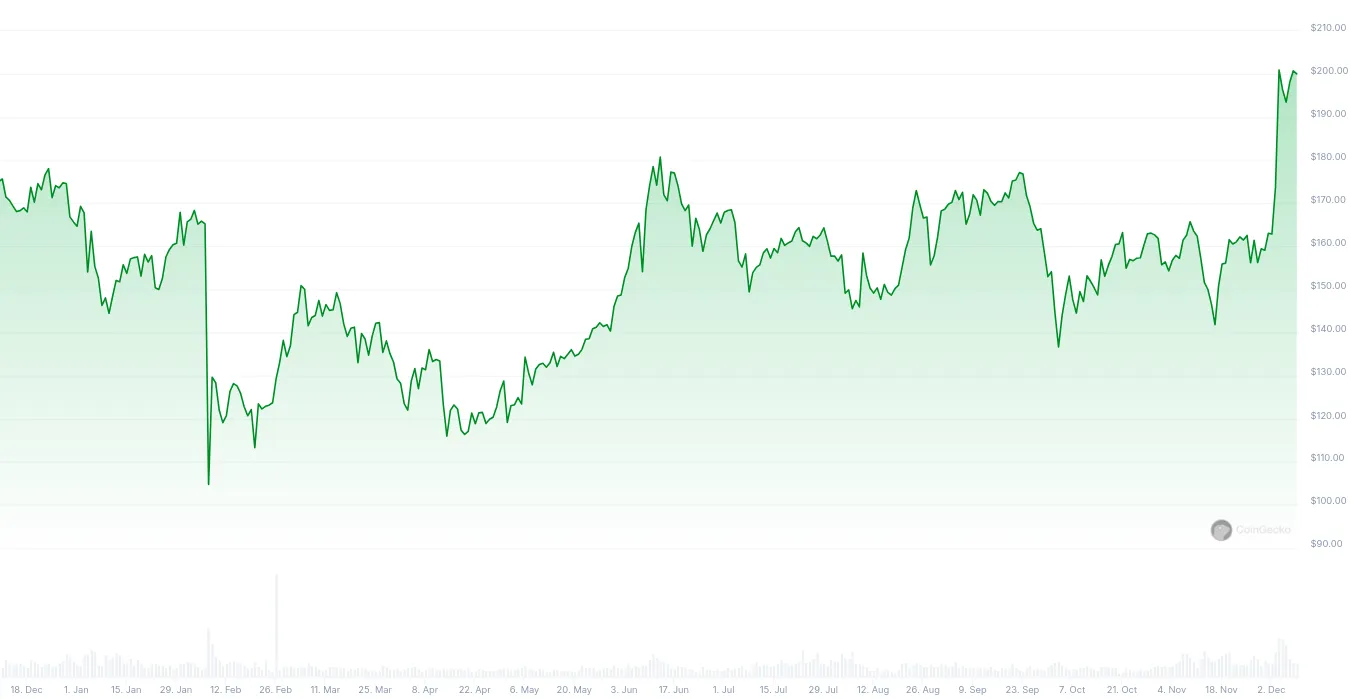
XMR price chart for 2024. Source: Coingecko.
Should You Buy Cryptocurrencies Not Listed on Major Exchanges?
Today, exchanges no longer serve as the ultimate benchmark for a cryptocurrency’s value. While insignificant cryptocurrencies like Gifto are unlikely to garner public interest, prominent projects can exhibit price growth without exchange listings — or even experience declines immediately after being listed.
For this reason, if you see potential in a cryptocurrency, the absence of a listing on major exchanges should not deter you from acquiring it.
Examples Supporting This View
- Kaspa (KAS):
- Over the past 2.5 years, Kaspa’s price has grown steadily, albeit with significant pullbacks.
- In the early stages of its growth, Kaspa was not listed on any major exchanges. It later began trading on mid-tier platforms and eventually on Bybit, a high-volume exchange.
- However, these listings had little impact on its overall trend: the price continued to rise but did not accelerate after being listed.
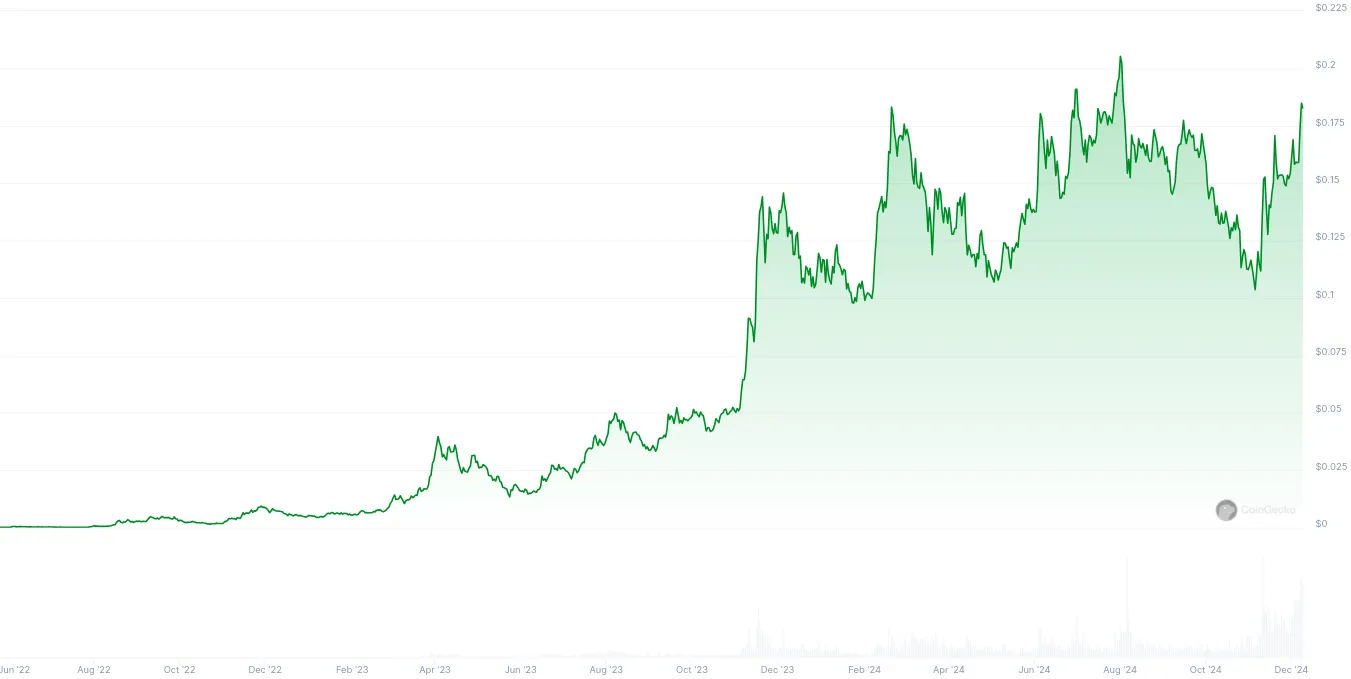
KAS price chart. Source: Coingecko.
Thus, the absence of a listing on Binance or other major exchanges has not hindered Kaspa’s prospects. If you believe in its future, you can confidently acquire it using stablecoins or other cryptocurrencies on Rabbit Swap. Selling it is just as easy through the same platform, as liquidity issues are unlikely to arise for Kaspa in the foreseeable future.
- Goatseus Maximus (GOAT):
- Within one month (October 14 to November 14, 2024), the token’s price surged from zero to $1, achieving a billion-dollar market capitalization — all without any involvement from major exchanges.
- Only after its initial growth phase did some exchanges list the token, with Binance notably abstaining. This has not diminished public interest in GOAT, and its price has remained stable at around $0.75.
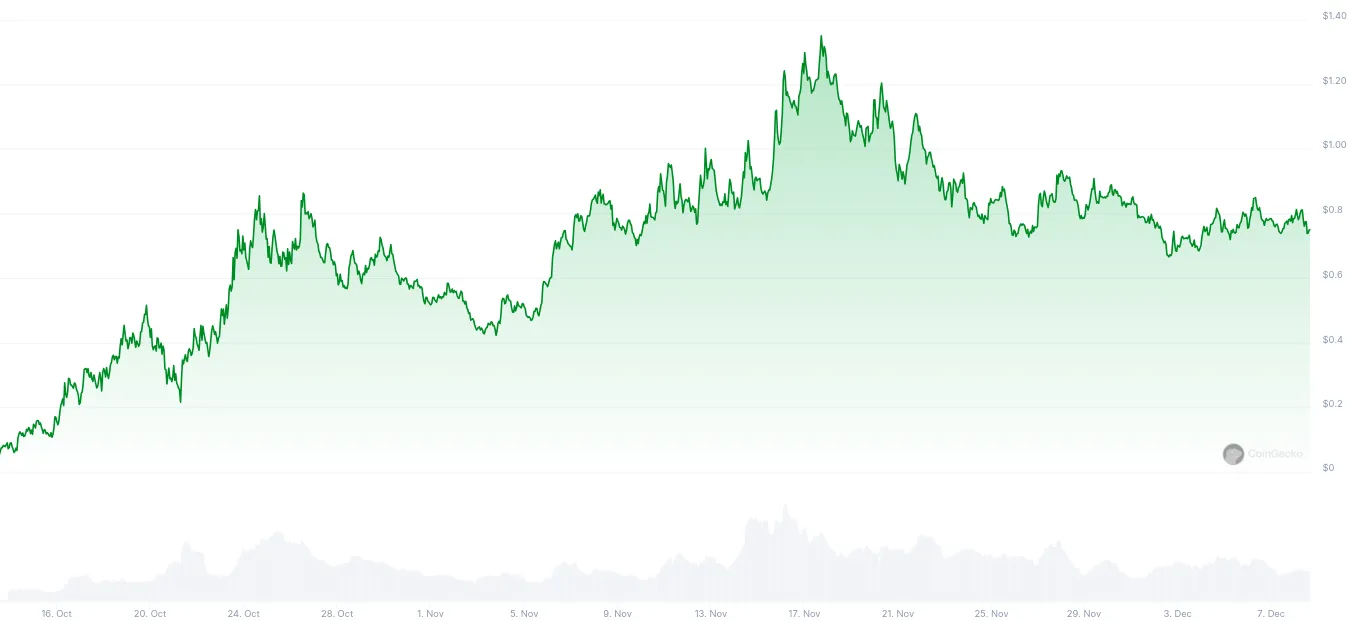
GOAT price chart. Source: Coingecko.
While the absence of a major exchange listing should not be a red flag, reliance on a single exchange for liquidity can create vulnerabilities.
For instance:
- The REEF BEP20 token was primarily traded on Binance. When Binance announced its delisting on August 12, 2024, the token became effectively illiquid.
- Although some liquidity providers on Rabbit Swap temporarily continued to accept REEF with discounts, this support ended shortly thereafter. Despite promises from the Reef developers to resolve the issue by October, they failed to launch the bridge not only by October but also by December, leaving holders of REEF BEP20 in limbo.
This example highlights the risk of relying too heavily on a single exchange for support. Dependence creates vulnerability, whereas the absence of exchange reliance eliminates such risks. Successful projects like XMR, KAS, and GOAT prove that cryptocurrencies can thrive without Binance or other top platforms.













